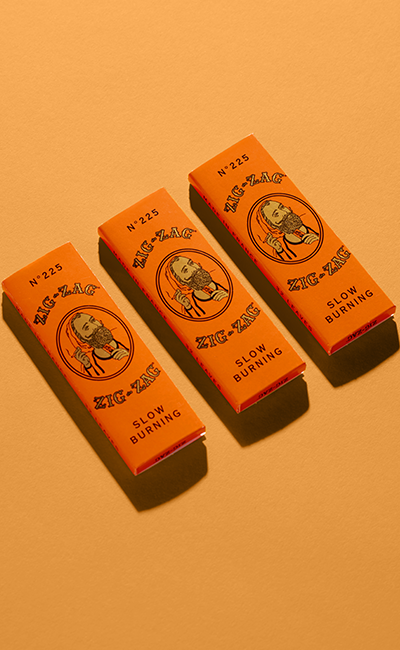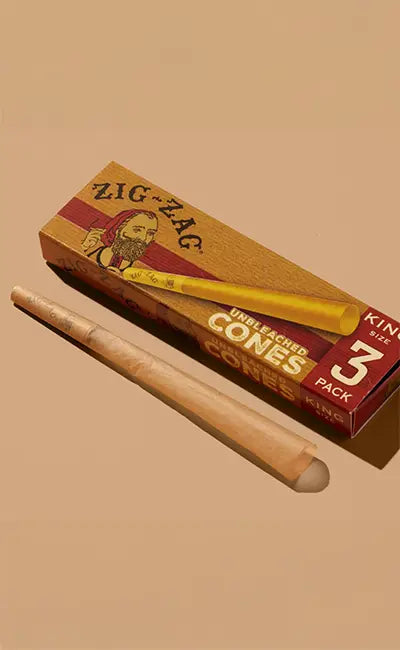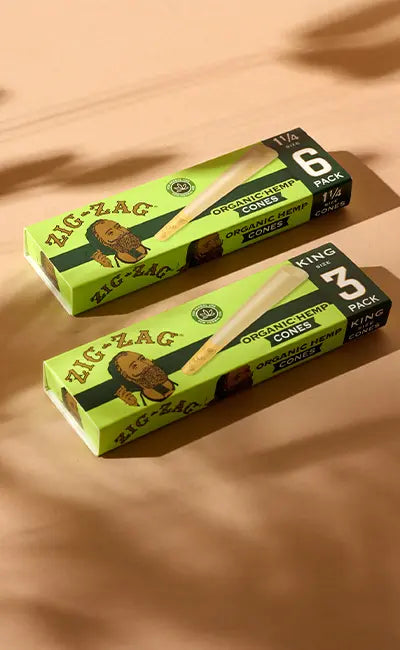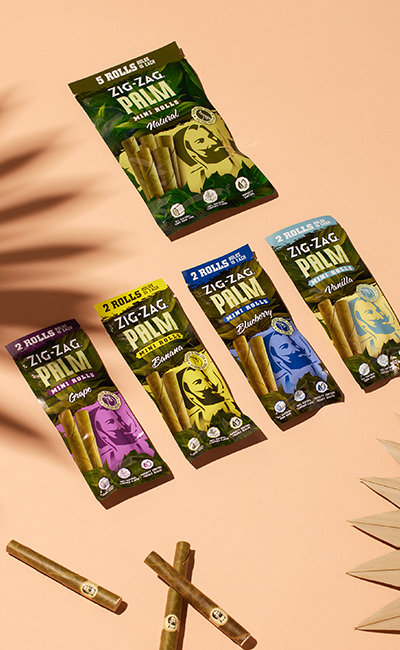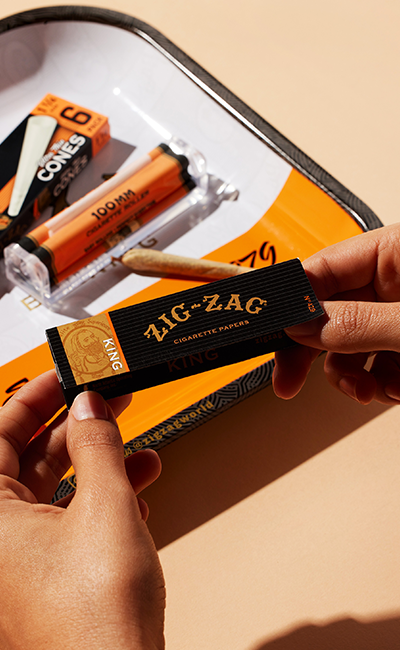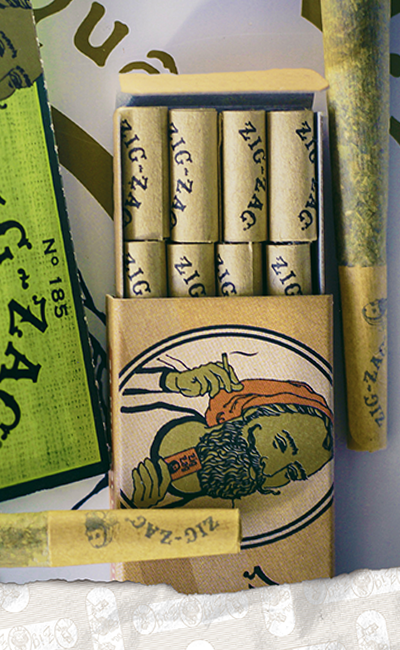Ultra-thin rolling papers are celebrated among enthusiasts for their ability to enhance the smoking experience significantly. These are designed to be so thin that they allow the natural flavors and aromas of the tobacco or herbs to shine through, without the interference of excessive paper taste. The reduced paper mass also results in less ash and a cleaner smoke, making each puff smoother and more enjoyable. Choosing ultra-thin papers means you're opting for a purer, more authentic smoking session, where the quality of the material you're smoking is not compromised by the medium it's rolled in.
Choosing the Right Ultra-Thin Rolling Papers
The Best Rolling Papers
One must consider the material from which they are made. Hemp papers are renowned for their strength and environmental sustainability, making them a popular choice among eco-conscious smokers. On the other hand, rice papers are virtually tasteless, providing a purer smoking experience without altering the herb's flavor. Lastly,
natural ultra-thin rolling papers often blend natural fibers, balancing thinness and ease of use. Each type has unique benefits, and the best choice depends on personal preference for taste, burn rate, and environmental impact.
Characteristics of Premium Ultra-Thin Rolling Papers
Key characteristics include transparency, indicating purity, and a lack of added chemicals, ensuring that your smoke's flavor is unaltered. These high-quality papers are typically made from organic materials, reducing the presence of harmful byproducts during combustion. Additionally, they possess a reliable adhesive strip, usually made from natural gum, which prevents the joint from unraveling during use.
How Paper Thickness Affects Burn Rate
The
thinnest rolling papers tend to burn slower than their thicker counterparts, which provides a smoother, more enjoyable smoking session. These also produce less ash and fewer byproducts, which means the natural flavors of the tobacco or herbs are more pronounced. Understanding this can significantly enhance your smoking experience by allowing more control over the taste and duration of your session.
Cost of Rolling Papers
While ultra-thin papers might come at a premium, investing in higher-quality papers can provide a better smoking experience, making them worth the extra penny. However, it’s important to balance quality with budget. To find the best value, compare prices among leading brands and consider buying in bulk to reduce costs.
Mastering Rolling Techniques for Ultra-Thin Papers
Steps to Roll a Joint
The delicacy of these papers demands extra attention. The following are the steps needed to achieve a perfect roll every time:
-
Prepare Your Herbs: Select your finest herbs and grind them evenly to achieve a consistent texture that is crucial for an optimal roll. Use a quality grinder to break down the herbs into a fine, uniform consistency that prevents clumps and uneven burning. As you grind, aim for a light and airy texture yet finely processed enough to create a smooth and cohesive filling. This preparatory step sets the foundation for a well-constructed joint and ensures that each puff draws an even mix of flavors and effects. Take your time to sift through the ground herb, removing any seeds or stems that might disrupt the uniformity.
-
Create a Filter: Next, it is essential to construct a filter—often referred to as a crutch—that provides structural support, enhances the draw, and protects your lips from loose particles. Start with a small piece of stiff, thin paper, and fold it into an accordion shape to create a series of pleats that can then be rolled into a cylindrical form. The filter serves several functions: it offers a firm base at one end of the joint, prevents the herb from slipping through, and ensures an unobstructed airflow by regulating the draw. As you work on creating the filter, consider experimenting with different shapes and sizes until you find the one that best suits your joint’s dimensions.
-
Arrange the Paper: Lay the paper flat on a smooth, clean surface to avoid any accidental creases that might disrupt the alignment of the joint. By properly orienting the paper, you create a clear pathway for adding the contents and shaping the final roll. The positioning of the paper is fundamental, as it sets the stage for how evenly the herb will be distributed and how well the paper will wrap around the filling. Taking a few moments to arrange the paper correctly can make a substantial difference in the final product’s appearance and functionality.
-
Distribute the Herbs: Distributing the herbs uniformly from one end to the other is crucial, ensuring that the filling is neither too thick nor too sparse. Work your way along the paper from the filter end, leaving an appropriate gap at the very end to allow for a secure finish. An even distribution of herb is key to achieving a smooth burn; any pockets of densely packed material can lead to hotspots, while too little herb may result in a weak, inefficient roll. As you sprinkle the herb, gently tap the paper to settle the contents without over-compacting them, which could restrict airflow. The goal is to maintain a balanced consistency that allows the paper to wrap neatly and the joint to burn at an even rate.
-
Tuck and Roll: Use your thumbs and forefingers to guide the paper as you roll, applying steady and even pressure to form a compact, consistent shape. The process of tucking requires a delicate balance—you must secure the paper around the filling without compressing it too tightly, as over-packing can impede airflow and result in an uneven burn. The art of rolling is as much about technique as it is about patience; take your time to ensure that every inch of the paper wraps smoothly around the herb. Rolling transforms the loose material into a solid joint that holds together during smoking, creating a structural integrity that is essential for a pleasurable experience. This step demands manual dexterity and an intuitive feel for how much pressure to apply, ensuring that the joint remains firm yet pliable.
-
Seal the Joint: After forming the cylinder, the next crucial step is to seal the joint effectively. Carefully roll the paper towards the adhesive strip, ensuring that the unglued edge is tucked neatly inside. Once aligned, lightly moisten the adhesive strip by licking it or using a minimal amount of water, then complete the roll by pressing the strip firmly against the rest of the paper. Sealing the joint properly is vital for maintaining its shape and preventing any unraveling during use. The adhesive must bond securely to ensure that the joint remains intact from the first puff to the last.
-
Pack the Ends: Once the joint is sealed, it is time to pack the open end, opposite the filter, to ensure an even burn throughout the smoking experience. Use a small, smooth tool such as a pen, a pencil, or a specialized packing device to press and compact the herb inside the joint gently. Carefully insert the tool into the open end and apply steady, gentle pressure, being mindful not to over-pack the herb, which can restrict airflow and make the joint difficult to draw.
Embrace these techniques as part of your creative ritual, and enjoy the satisfaction that comes with a perfectly rolled joint every time.
Advanced Techniques for a Smooth, Slow-Burning Roll
Advanced techniques, like the 'Boat' method and double rolling, cater to those who seek perfection in their craft. The 'Boat' method involves initially folding your rolling paper into a boat-like shape, creating a trough in the center. This approach simplifies the distribution of herbs, preventing them from spilling over the edges and providing a secure structure for rolling. Moreover, the trough-like shape facilitates tighter rolling, which is instrumental in extending the duration of the burn, enhancing the enjoyment and efficiency of consumption. The technique of double rolling, wherein two papers are used—one inside the other—adds an extra layer of durability and robustness to the roll. This method is especially beneficial for those who are still honing their skills and find themselves frequently tearing papers during the process.
How to Handle Delicate Papers Without Tearing
Handling ultra-thin cones for rolling requires a soft touch and attention to detail. Here are tips for rolling joints:
-
Work on a Clean, Dry Surface: Ensuring that you work on a clean, dry surface is fundamental when handling ultra-thin rolling cones. The quality of your workspace directly influences the condition of these delicate papers, as even a small amount of moisture or residue can weaken the fibers and lead to tears. Select a flat, clutter-free area that has been wiped down thoroughly to remove dust, grease, or dampness. A smooth surface minimizes friction and provides a stable base for aligning the paper and distributing your herbs evenly. Moisture, whether from spills or ambient humidity, can cause the paper to become limp or sticky, making it much more susceptible to accidental ripping when you try to manipulate it with your fingers.
-
Use Both Hands: One hand should gently hold and stabilize the paper while the other manipulates and distributes the herbs with controlled movements. This dual-handed technique allows for greater precision, as it reduces the strain placed on any single point of the paper. With both hands engaged, you can more effectively smooth out any creases and maintain the paper’s integrity as you roll it. Also, using both hands enhances your ability to quickly adjust your grip if you sense any potential weakening or stress on the paper, preventing accidental tears before they occur.
-
Practice Patience and Care: When you work slowly, you allow yourself to observe how the paper reacts to different movements and pressures, allowing you to refine your approach with every roll. Rushing through the process can result in uneven distribution of herbs, misalignment of the paper, and ultimately, damage to the fragile material. By dedicating ample time to each phase—from setting up your workspace to sealing the final roll—you ensure that every detail is attended to with care. A calm and deliberate approach helps reduce the risk of errors, as you can more effectively manage each small task, such as adjusting the grip, smoothing out wrinkles, or ensuring the proper tension across the paper.
With practice, these approaches will lead to consistently smooth, beautifully crafted rolls that elevate your smoking experience every time.
Where to Buy Pre-Rolled Cones Online
It is essential to purchase from vendors that provide detailed product descriptions and transparent customer reviews. Websites that specialize in smoking accessories often have a wider range of options and more expertise in the quality of their products. Look for online stores that guarantee freshness and offer a variety of sizes and materials.
Essential Accessories for the Perfect Roll
Filters and Crutches
In the quest for the perfect joint, the importance of filters, or crutches, cannot be overstated. These small additions serve crucial functions: they maintain the joint’s shape, prevent the end from closing during inhalation, and block bits of herb from entering the mouth. Filters can be made from various materials, including glass, which can be reused, and paper, which is disposable.
Grinder Selection
A grinder is an indispensable tool for any smoker, particularly when working with
ultra-thin rolling methods. The consistency of your herb’s grind affects everything from the ease of rolling to the evenness of the burn. A fine, even grind creates a homogeneous airflow throughout the joint, which helps prevent canoeing or uneven burns. Quality grinders with sharp, durable blades and multiple chambers for collecting kief not only optimize the texture of your grind but also enhance the overall efficiency.
Rolling Trays and Tools
Rolling trays are designed with raised edges to keep all rolling materials and tools contained, minimizing mess and waste. Tools such as tamping devices and scoops help evenly distribute and pack the herbs, ensuring the joint is perfectly formed. Some trays even come with holders for your papers and spaces for multiple rolled joints, enhancing organization and convenience during the rolling process.
Slow-Burning Joint Papers
The choice of
slow-burning joint papers is vital for anyone looking to prolong their smoking session. The slow burn allows for a more leisurely and enjoyable experience, as it requires less frequent relighting and provides a steady, controlled release of smoke.
Improving your rolling skills is a gradual process that involves patience, practice, and a willingness to learn from each attempt. Begin by mastering the basics of handling ultra-thin rolling papers and progress to more complex techniques, such as rolling cones or creating unique shapes. Watching tutorials, learning from experienced rollers, and practicing regularly are excellent ways to enhance your technique. Take notes on what works and what doesn’t, and don't be afraid to experiment with different types of papers, grinds, and moisture levels of herbs to see what combination best suits your preferences.





